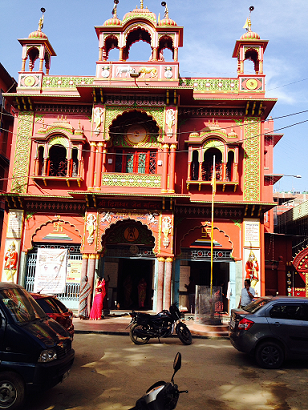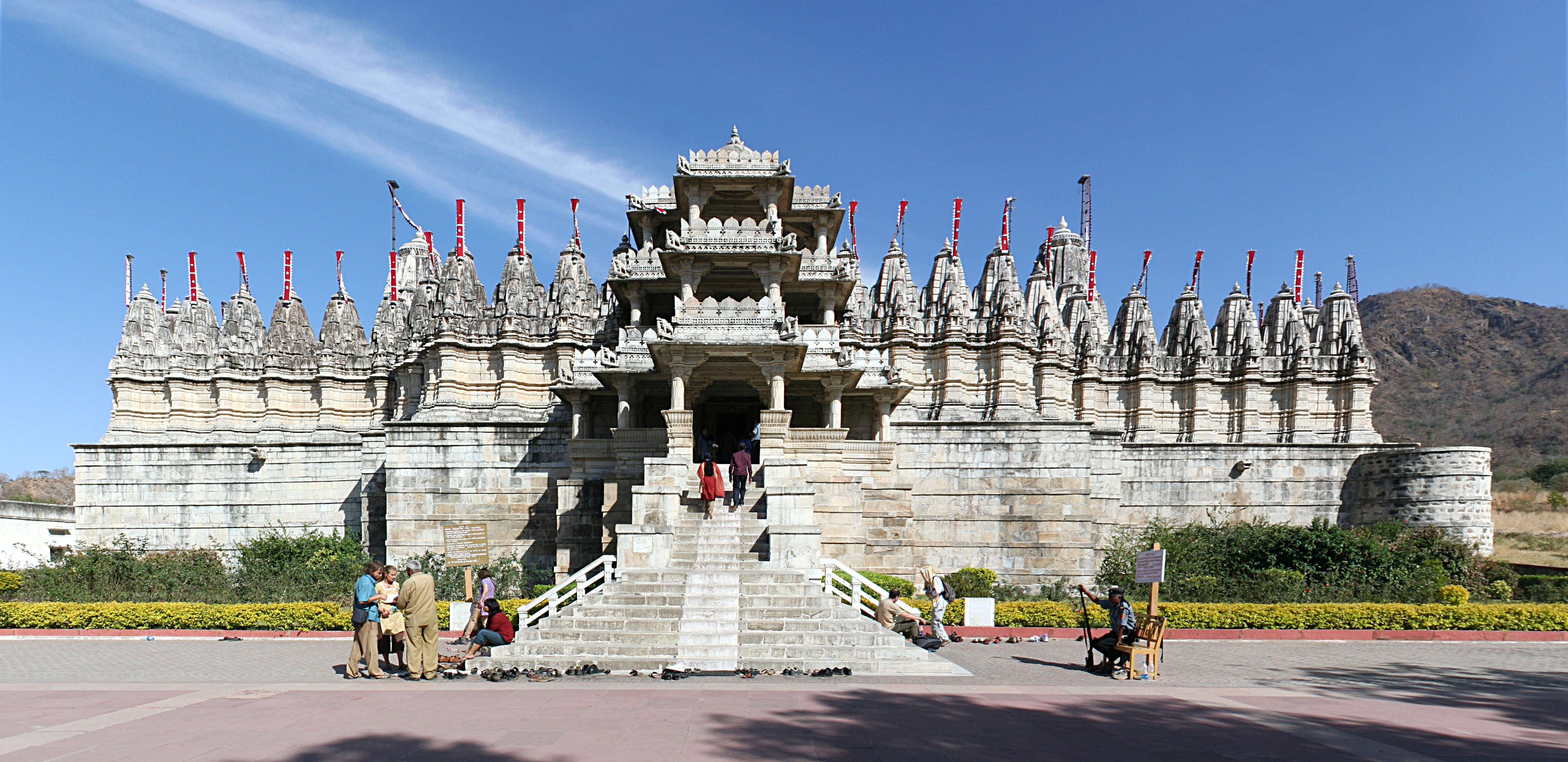|
Jainism In Nagaland
Nagaland, a state in north eastern India has had a long association with Jainism. Today the state has two Jain temples and has become home to hundreds of Jain families living prosperously and peacefully. History The first Jain temple in Nagaland was established in Kohima. The temple was established in 1920 by 8 Sethi families, who were the first non naga settlors in Nagaland, prominent among them being Hardev Sethi, Hiralal Sethi, Phulchand Sethi, Jethmal Sethi, Devalal Sethi. These families then moved to Dimapur in 1944 due to Japanese invasion during World War II. These families established the Jain temple in Dimapur in 1947. Dimapur Jain Temple Dimapur Jain Temple was built in 1947. The temple is architecturally very well built and has an impressive structure. The temple has some intricate glass work. The temple is considered very auspicious by the people of Dimapur. The Moolnayak of the temple is Lord Mahavira. Dimapur is the business center of Nagaland today and most o ... [...More Info...] [...Related Items...] OR: [Wikipedia] [Google] [Baidu] |
Jain Temple Dimapur
Jainism ( ), also known as Jain Dharma, is an Indian religions, Indian religion. Jainism traces its spiritual ideas and history through the succession of twenty-four tirthankaras (supreme preachers of ''Dharma''), with the first in the current time cycle being Rishabhadeva, whom the tradition holds to have lived millions of years ago, the twenty-third ''tirthankara'' Parshvanatha, whom historians date to the 9th century BCE, and the twenty-fourth ''tirthankara'' Mahāvīra, Mahavira, around 600 BCE. Jainism is considered to be an eternal ''dharma'' with the ''tirthankaras'' guiding every time cycle of the Jain cosmology, cosmology. The three main pillars of Jainism are ''Ahimsa in Jainism, ahiṃsā'' (non-violence), ''anekāntavāda'' (non-absolutism), and ''aparigraha'' (asceticism). Jain monks, after positioning themselves in the sublime state of soul consciousness, take five main vows: ''ahiṃsā'' (non-violence), ''satya'' (truth), ''Achourya, asteya'' (not stealing), ''b ... [...More Info...] [...Related Items...] OR: [Wikipedia] [Google] [Baidu] |
Nagaland
Nagaland () is a landlocked state in the northeastern region of India. It is bordered by the Indian states of Arunachal Pradesh to the north, Assam to the west, Manipur to the south and the Sagaing Region of Myanmar to the east. Its capital city is Kohima and its largest city is Dimapur. The state has an area of with a population of 1,980,602 as per the 2011 Census of India, making it one of the smallest states in India.Census of India 2011 Govt of India Nagaland became the 16th state of India on 1 December 1963. It is home to a rich variety of natural, cultural and environmental resources. Nagaland is a mountainous state and lies between the parallels of 95 and 94 degrees east longitude and 25.2 and 27.0 degrees latitude north. The high-profile [...More Info...] [...Related Items...] OR: [Wikipedia] [Google] [Baidu] |
Jainism
Jainism ( ), also known as Jain Dharma, is an Indian religions, Indian religion. Jainism traces its spiritual ideas and history through the succession of twenty-four tirthankaras (supreme preachers of ''Dharma''), with the first in the current time cycle being Rishabhadeva, whom the tradition holds to have lived millions of years ago, the twenty-third ''tirthankara'' Parshvanatha, whom historians date to the 9th century BCE, and the twenty-fourth ''tirthankara'' Mahāvīra, Mahavira, around 600 BCE. Jainism is considered to be an eternal ''dharma'' with the ''tirthankaras'' guiding every time cycle of the Jain cosmology, cosmology. The three main pillars of Jainism are ''Ahimsa in Jainism, ahiṃsā'' (non-violence), ''anekāntavāda'' (non-absolutism), and ''aparigraha'' (asceticism). Jain monks, after positioning themselves in the sublime state of soul consciousness, take five main vows: ''ahiṃsā'' (non-violence), ''satya'' (truth), ''Achourya, asteya'' (not stealing), ''b ... [...More Info...] [...Related Items...] OR: [Wikipedia] [Google] [Baidu] |
Jain Temples
A Jain temple, Derasar (Gujarati: દેરાસર) or Basadi (Kannada: ಬಸದಿ) is the place of worship for Jains, the followers of Jainism. Jain architecture is essentially restricted to temples and monasteries, and Jain buildings generally reflect the prevailing style of the place and time they were built. Jain temple architecture is generally close to Hindu temple architecture, and in ancient times Buddhist architecture. Normally the same builders and carvers worked for all religions, and regional and period styles are generally similar. For over 1,000 years, the basic layout of a Hindu or most Jain temples has consisted of a small garbhagriha or sanctuary for the main murti or cult images, over which the high superstructure rises, then one or more larger mandapa halls. Māru-Gurjara architecture or the "Solanki style" is, a particular temple style from Gujarat and Rajasthan (both regions with a strong Jain presence) that originated in both Hindu and Jain temples ... [...More Info...] [...Related Items...] OR: [Wikipedia] [Google] [Baidu] |
Kohima
Kohima (; Angami Naga: ''Kewhira'' ()), is the capital of the Northeastern Indian state of Nagaland. With a resident population of almost 100,000, it is the second largest city in the state. Originally known as ''Kewhira'', Kohima was founded in 1878 when the British Empire established its headquarters of the then Naga Hills District of Assam Province. It officially became the capital after the state of Nagaland was inaugurated in 1963. Kohima was the site of one of the bloodiest battles of World War II. The battle is often referred to as the '' Stalingrad of the East''. In 2013, the British National Army Museum voted the Battle of Kohima to be ''Britain's Greatest Battle''. Kohima constitutes both a district and a municipality. The municipality covers . Kohima lies on the foothills of Japfü section of the Barail Range located south of the District () and has an average elevation of 1,261 metres (4137 feet). Etymology Kohima was originally known as ''Kewhi–ra''. The name, ... [...More Info...] [...Related Items...] OR: [Wikipedia] [Google] [Baidu] |
Phulchand Sethi
Phulchand Sethi (November 1911 – 2 October 1976) was a social worker, philanthropist and businessman from Dimapur, Nagaland in Northeast India. He was amongst the first proponents of Jainism in Nagaland. He was awarded the Commendation Certificate by the Governor of Nagaland, Lallan Prasad Singh, on 15 August 1975 for Social and Humanitarian activities. In 1959, he established the Dimapur Chamber of Commerce. Sethi could speak many local dialects such as Angami, Sümi, Lotha, Kuki, Manipuri and Assamese. He died on 2 October 1976 in Dimapur. Early life and education Phulchand Sethi was born in November 1911, in Kohima, Nagaland to Hardev Sethi. He was schooled at Digambar Jain M. E. School (Kohima) in Nagahills, an institution of which he was later the secretary between 1928-1940. Sethi married Lada Devi Sethi in 1935, a well-known personality of the Jain community, and with her had five sons and six daughters. His sons and daughters have all held various important positi ... [...More Info...] [...Related Items...] OR: [Wikipedia] [Google] [Baidu] |
Dimapur
Dimapur () is the largest city in the Indian state of Nagaland. As of 2011, the municipality had a population of 122,834. The city is the main gateway and commercial centre of Nagaland. Located near the border with Assam along the banks of the Dhansiri River. Its main railway station is the second busiest station in Northeast India. Etymology The name Dimapur is derived from the Dimasa words; ''Di'' means "water", ''ma'' means "large" and ''pur'' (sanskrit word) means "city", translating to "Big-river-city", associated with the meaning of "Kachari" which is "people of the river valley" and after the river which flows through it (Dhansiri). There are two accounts of the way in which Dimapur got its name: many writers are of the opinion that the name 'Dimapur' was derived from Dimasa Kachari words ''Di''-meaning water, ''Ma''-meaning big and ''Pur''-meaning city or township in the Dimasa dialect; while others contend that Dimapur is a corruption of ''Hidimbapur'', meaning the c ... [...More Info...] [...Related Items...] OR: [Wikipedia] [Google] [Baidu] |
Shree Digambar Jain Temple Dimapur
Dimapur Jain Temple is a Jain temple built in 1947. The temple is located in Jain Temple Road, and has Lord Mahavira as its Moolnayak. The temple is under the aegis of the SD Jain Samaj Dimapur. History During the pre-independence era, most of the Jain families were settled in Kohima. All these families belong to the Digambara sect. In 1920, eight Sethi families, who were non Naga Settlers, built the first Jain temple in Kohima in Nagaland. However these families moved to Dimapur in 1944 due to Japanese invasion during World War II. These families then built the Dimapur Jain Temple, SD Jain School, SD Jain Charitable Hospital. The most prominent among these were Shri Phulchand Sethi, Shri Jethmal Sethi, Shri Kanhaiyalal Sethi, Hardev Sethi, Hiralal Sethi and Shri Mangilal Chabra. Shri Phulchand Sethi was the first secretary of the SD Jain Samaj, Dimapur and continued on this post till 1976. Shri Udayram Ji Chabra was the first president of the SD Jain Samaj followed by Shri Je ... [...More Info...] [...Related Items...] OR: [Wikipedia] [Google] [Baidu] |
Jain Temple Kohima
Jain temples and '' tirtha'' (pilgrimage sites) are present throughout the Indian subcontinent, many of which were built several hundred years ago. Many of these temples are classified according to Jain sects. Idols of tirthankaras are present in these temples. Many Jain temples are found in other areas of the world. This article lists and documents prominent Jain temples and Tirthas around the world. India Andhra Pradesh File:Gummileru Jain Temple.jpg, Shree Shankheshwar Parshwanath Jain Temple File:Hrinkar Teerth.jpg, Hrinkar Teerth File:Siddala Kona Rock Cave.JPG, Siddalakona cave temple File:Jain temple at Ambapuram.jpg, Ambapuram cave temple, 7th century ;Cave temples * Undavalli Caves * Ambapuram cave temple * Bodhikonda and Ghanikonda Caves * Siddalakona ; Main temples * Danavulapadu Jain temple * Shree Shankheshwar Parshwanath Jain temple in Gummileru * Hrinkar Teerth near NH 5, Namburu. Assam * Jain Temple in Tihu, Tihu * Sri Surya ... [...More Info...] [...Related Items...] OR: [Wikipedia] [Google] [Baidu] |
Census
A census is the procedure of systematically acquiring, recording and calculating information about the members of a given population. This term is used mostly in connection with national population and housing censuses; other common censuses include censuses of agriculture, traditional culture, business, supplies, and traffic censuses. The United Nations (UN) defines the essential features of population and housing censuses as "individual enumeration, universality within a defined territory, simultaneity and defined periodicity", and recommends that population censuses be taken at least every ten years. UN recommendations also cover census topics to be collected, official definitions, classifications and other useful information to co-ordinate international practices. The UN's Food and Agriculture Organization (FAO), in turn, defines the census of agriculture as "a statistical operation for collecting, processing and disseminating data on the structure of agriculture, covering th ... [...More Info...] [...Related Items...] OR: [Wikipedia] [Google] [Baidu] |
Binod Sethi
Binod Sethi is a social worker, philanthropist, and a businessman of Dimapur, Nagaland in Northeast India. He is one of the first industrialists in Nagaland. He is a pioneer in Nagaland plywood industry having founded the Reliable Products Ltd in 1987, a leading plywood manufacturer of its time. He has served as the vice-president of Digambar Jain Samaj, Dimapur and the advisor of the Shree Digambar Jain Girls' College Dimapur for over 18 years. Early life and education He was born on 10 October 1957, in Dimapur, Nagaland to Phulchand Sethi and Lada Devi Sethi. He completed his early education from Government High School Dimapur. He then graduated from Guwahati Commerce College. He was active in college politics and was Social Welfare Secretary of the college in 1978. His father was one of the founding fathers of the Jain community in Nagaland. Personal life Binod Sethi was married to Sona Devi Sethi in 1980. He has 2 sons and 2 daughters. He is the Chairman of Smt Sona D ... [...More Info...] [...Related Items...] OR: [Wikipedia] [Google] [Baidu] |
Jainism In India
Jainism is India's sixth-largest religion and is practiced throughout India. Per the 2011 census, there are 4,451,753 Jains in the 1.35 billion population of India, the majority living in Maharashtra, Rajasthan, Gujarat and Madhya Pradesh, Karnataka, however, the influence of Jainism has been far greater on the Indian population than these numbers suggest. Jains can be found in every states and union territories, varying from large societies to smaller. The state of Jharkhand, with a population of 16,301 Jains also contains the holy pilgrimage centre of Sammed Shikharji.Jain's are all over India and other countries are also adopting Jainism. History Jain doctrine teaches that Jainism has always existed and will always exist, Like most ancient Indian religions, Jainism has its roots from the Indus Valley civilization, reflecting native spirituality prior to the Indo-Aryan migration into India. Other scholars suggested the Shramana traditions were separate and contemporaneous ... [...More Info...] [...Related Items...] OR: [Wikipedia] [Google] [Baidu] |




.jpeg/1200px-Kohima_War_Cemetery%2C_Kohima%2C_Nagaland_(89).jpeg)
.jpg)


